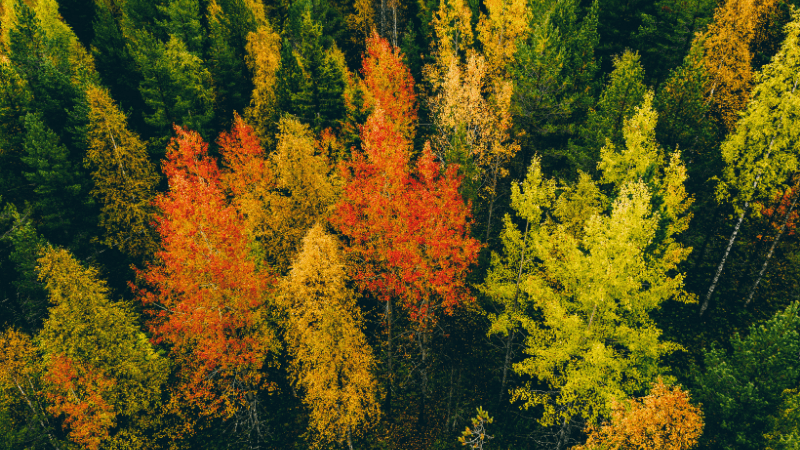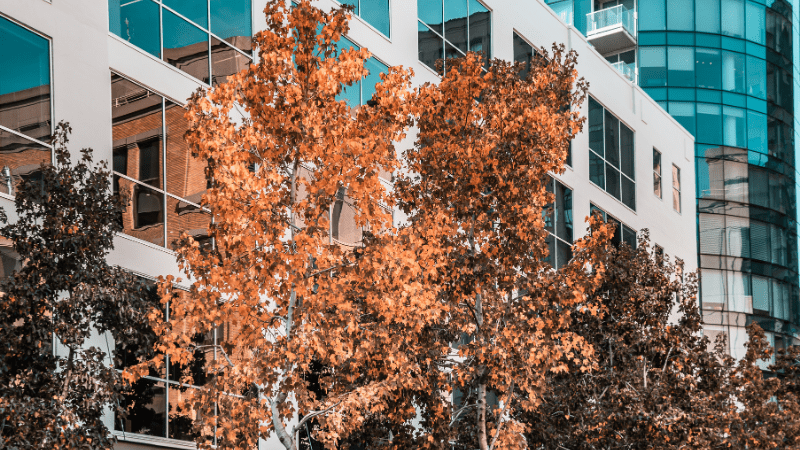Why Fall Fertilization Is a Western Canada Tree’s Best Friend

Fall Fertilization is your trees best friend!
We all know the drill: fall rolls around, the leaves turn spectacular shades of red and gold, and our trees start preparing for their long winter nap. So, why would we talk about fall fertilization when everything is shutting down? It feels counterintuitive, but for your valuable Western Canadian trees—from the aspens in Edmonton to the spruce in Winnipeg—fall is arguably the most critical time to feed them.
Why Fall is the New Spring for Tree Roots
In our neck of the woods, the growing season is short, but the downtime is long. Once the air temperatures drop, you notice the canopy growth stopping. But below the ground, a hidden process is ramping up: root growth.
When the tree stops putting energy into making leaves and branches, it redirects that remaining energy into developing its root system. This is a crucial window for storing energy reserves that will be needed to survive the harsh winter and fuel the explosive growth burst next spring.

Giving your trees a quality fertilizer boost in the fall provides several massive benefits:
- Winter Resilience: Stronger, healthier roots are less susceptible to cold damage and frost heaving.
- Spring Head Start: The stored nutrients mean your trees can push out new leaves faster and earlier once the weather warms, outcompeting pests and diseases.
- Drought Recovery: If you had a dry summer, fall feeding helps the roots recover and repair stress damage.
Timing Is Everything: The Western Canada Window
In Calgary, Regina, and across the Prairies, timing is critical. You don’t want to encourage tender new canopy growth right before the first hard frost, which is what happens if you fertilize too early in the summer or early fall.
The perfect window for fall tree fertilization is typically late August through mid-October, or any time before the ground freezes solid.
This timing ensures that the tree can absorb the nutrients and dedicate that energy to root development and storage, not a useless late-season leaf growth spurt.
The “What”: Choosing the Right Feast
Not all fertilizers are created equal, and what you use in the spring is not what you should be using in the fall.
The goal in autumn is to stimulate roots and energy storage, not to promote green, leafy growth.
We recommend a formula designed to support this critical root process, specifically one that is:
- Higher in Phosphorus (P) and Potassium (K): These elements are the building blocks for strong roots and overall plant health. Potassium, in particular, acts like a winter coat for your tree, improving its cold hardiness and internal processes.
Look for a slow-release, deep-root feeding application. This method ensures the nutrients are placed directly where the active roots can use them, avoiding runoff and waste.
The Arborist Advantage: Our RootBoost Fertilization
While broadcast granular fertilizer is common for lawns, your trees—especially large or established specimens—need something more targeted.
Our signature service, RootBoost Fertilization, utilizes specialized equipment for deep-root feeding. This process involves injecting a liquid nutrient solution directly into the soil beneath the canopy. This method breaks up compacted soil, allowing the roots better access to oxygen and water, all while delivering the perfect balance of fall-specific nutrients.
Don’t let your Western Canadian trees head into winter on an empty tank. A well-timed fall application of RootBoost Fertilization is the simplest and most effective way to ensure they wake up next spring ready to thrive. Say hello to beautiful, resilient trees!
Ready to give your trees the fall boost they deserve? Contact the experts at Green Drop Tree Care for a professional RootBoost Fertilization assessment tailored for your area!
FAQs
Are your arborists local to each service area?
What are the costs of regular tree health care?
What areas does Green Drop provide emergency tree services?
What does your DED management program involve?
What services do you offer?
Explore Our Latest Insights


5 Signs Your Tree Is in Trouble (And What to Do About It)
